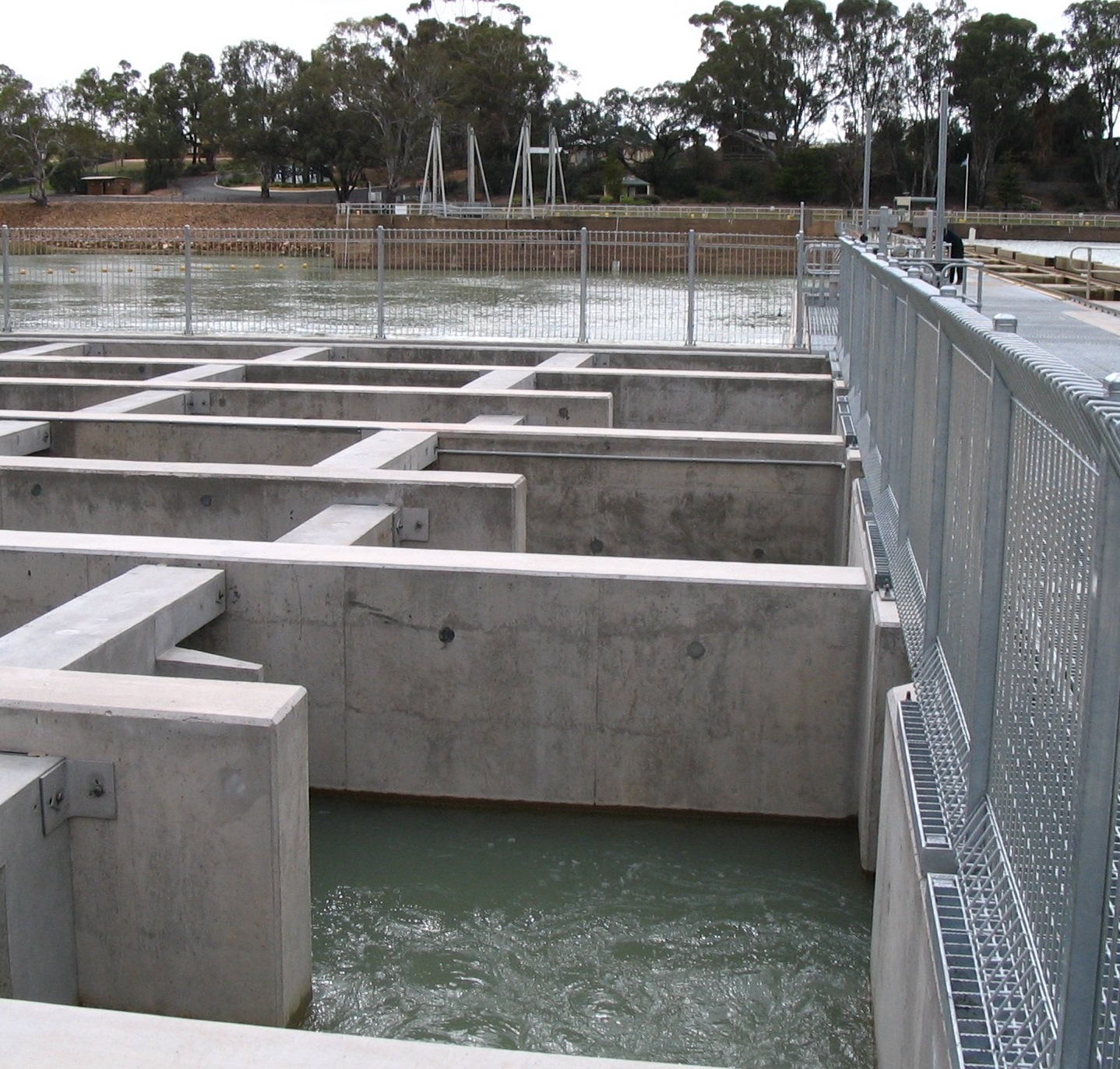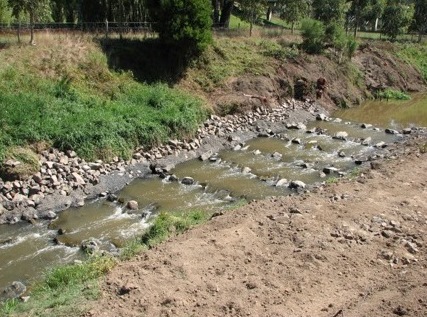Fish need to be able to move freely among habitats to successfully complete all stages of their life-history. Fish move upstream and downstream (often up to many hundreds of kilometres), as well as into and out of connected wetlands and floodplains. Fish undertake these movements for various reasons including spawning, feeding and dispersal.
A key characteristic of a healthy aquatic ecosystem is unrestricted fish movement. However, aquatic habitats and waterways have been modified by the construction of dams, weirs and culverts to provide hydropower, irrigation and navigation. This provides important community benefits, but it has also changed how rivers flow, altered water quality, and reduced river connectivity. These changes have led to reductions in population sizes and distribution of many fish species. To help alleviate some of these impacts there are a number of solutions that can improve river connectivity including the installation of fishways. ARI has a long history in improving river connectivity including the prioritization of barriers, design of fishway structures and monitoring and evaluation.
Fishway designs vary greatly. For barriers up to six metres high, an appropriately designed fishway may include multiple rows of rocks or a series of connected concrete chambers. For barriers greater in height, fully automated structures that trap and move fish upstream are usually required.


Designs are based on the ability of specific fish species to swim and manoeuvre against a current, and consider specific water velocities, turbulence and light levels. For example, it can be more challenging to design fishways for fish less than 40 mm in length to pass through, as small fish have less swimming ability. ARI works closely with Catchment Management Authorities, water authorities and the community to reconnect rivers across Victoria with the aim of helping to improve native fish populations.
The Victorian Waterway Management Strategy (DEPI 2013) provided a suite of actions relating to maintaining and improving river connectivity. DELWP Water and Catchments provided funding for ARI to prepare the following four key documents to address these actions:
- O'Connor, J., Stuart, I. and Jones, M. (2017) Guidelines for the design, approval and construction of fishways. (PDF, 3.0 MB) Arthur Rylah Institute for Environmental Research. Technical Report Series No. 274. Department of Environment, Land, Water and Planning, Heidelberg, Victoria
(accessible version (DOCX, 7.7 MB)) - O'Connor, J., Stuart, I. and Campbell-Beschorner, R. (2017) Guidelines for fish passage at small structures. (PDF, 2.3 MB) Arthur Rylah Institute for Environmental Research. Technical Report Series No. 276. Department of Environment, Land, Water and Planning, Heidelberg, Victoria
(accessible version (DOCX, 6.7 MB)) - Jones, M.J. and O'Connor, J.P. (2017) Monitoring the performance of fishways and fish passage works. (PDF, 2.2 MB) Arthur Rylah Institute for Environmental Research Technical Report Series No. 257. Department of Environment, Land, Water and Planning, Heidelberg, Victoria
(accessible version (DOCX, 4.6 MB)) - O'Connor, J., Mallen-Cooper, M. and Stuart, I. (2015) Performance, operation and maintenance guidelines for fishways and fish passage works. (PDF, 4.6 MB) Arthur Rylah Institute for Environmental Research Technical Report Series No. 262. Department of Environment, Land, Water and Planning, Heidelberg, Victoria
(accessible version (DOCX, 13.5 MB))
Also see our Fish Friendly Stream Gauging Station Program page, which is reviewing the status of stream gauging stations across Victoria.
For more information contact: justin.o'connor@delwp.vic.gov.au or matthew.jones@delwp.vic.gov.au
ARI has been involved in many other projects regarding fish passage:
- O’Connor, J., Hale, R, Martin Mallen-Cooper, M. Cooke, S. J. and Stuart, I. (2022) Developing performance standards in fish passage: Integrating ecology, engineering and socio-economics. Ecological Engineering 182
- O'Connor, J., Amtstaetter, F., Jones, M. and Mahoney, J. (2015) Prioritising the rehabilitation of fish passage in a regulated river system based on fish movement. Ecological Management and Restoration 16: 67–72
- Amtstaetter, F., O'Connor, J., Borg, D., Stuart, I. and Moloney, P. (2017) Remediation of upstream passage for migrating Galaxias (Family: Galaxiidae) through a pipe culvert. Fish Management and Ecology 24:186–192
- Jones M.J., Baumgartner L.J., Zampatti B.P. and Beyer, K. (2017) Low light inhibits native fish movement through a vertical-slot fishway: implications for engineering design. Fish Management and Ecology 24:177–185
- Stuart, I. and Marsden, T. (2019) Evaluation of cone fishways to facilitate passage of small-bodied fish. Aquaculture and Fisheries 6(2): 125-134
- O'Connor, J., Pickworth, A., Fanson, B. and Lovric, D. (2019) Assessment of a vertical slot fishway in south‐eastern Australia designed to pass numerous species and size classes of fish. Ecological Management and Restoration 20(2): 151-155
- Koster, W., Dawson, D., Kitchingman, A., Moloney, P. and Hale, R. (2020) Habitat use, movement and activity of two large-bodied native riverine fishes in a regulated lowland weir pool. Journal of Fish Biology 96(3): 782-794
Page last updated: 21/07/23